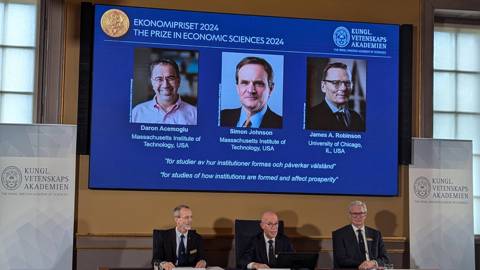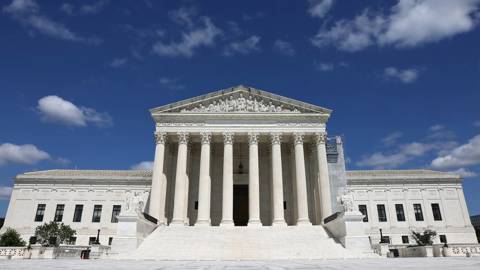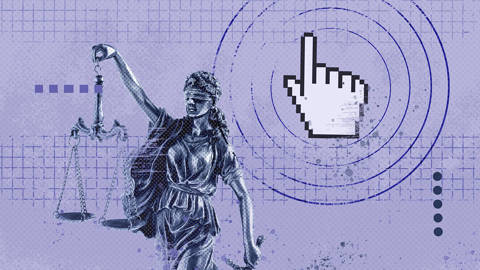OnPoint Subscriber Exclusive

Courtney C. Radsch
Says More…
This week, Project Syndicate talks with Courtney C. Radsch, Advocacy Director at the Committee to Protect Journalists.
Project Syndicate: In your latest PS commentary, you condemn the police who have “assaulted, arrested, and shot at” journalists covering the unfolding protests against systemic racism and police brutality in the United States. The American Civil Liberties Union (ACLU) of Minnesota has since filed a class-action lawsuit on behalf of journalists who were targeted and attacked by police while covering the protests there. To what extent can this or similar lawsuits provide “swift and meaningful accountability”?
Courtney C. Radsch: Lawsuits are a crucial tool in the effort to hold police accountable for violence against journalists covering the historic protests now underway. They can lead to concrete changes in law and practice, and set new precedents clarifying what is and is not acceptable behavior in a democracy. The ACLU’s lawsuit can do all of that, and deterring police from using violence against journalists in the future undoubtedly amounts to meaningful accountability. But lawsuits are rarely swift. That is why other, more immediate steps must be taken to identify and punish violent officers, and to ensure that crowd-control tactics do not end up harming journalists (or protesters, for that matter).
Law-enforcement officers need appropriate training, vetting, and support, so that they fulfill their obligation to uphold the law, including the rights enshrined in the US Constitution’s First Amendment, which protects freedom of speech and of the press, and the right of the people peaceably to assemble. Journalists must be able to report freely on events, without fear of injury or reprisal.
PS: Some of the US police attacks against journalists, you note, appear to have been racially motivated. You also recently retweeted a thread in which journalists of color discuss the racism and discrimination they’ve faced in newsrooms. How should journalists and editors, whether in the US or elsewhere, confront their own profession’s institutionalized biases?
CCR: As a media scholar, I’ve been thinking a lot about structural racism in journalism, especially lately. I think about journalism as the twentieth-century French sociologist Pierre Bourdieu did: as a “field of practice” comprising practices, values, norms, and subject positions that, in many cases, reify the status quo. That includes replicating systemic bias and inequality.
A good example is the view that the professional norm of objectivity requires a journalist to get “both sides” of a story, even if one side is racist, misogynistic, scientifically unsound, or otherwise dangerous. Just recently, the New York Times, in the interest of impartiality, published an op-ed by a US senator calling for a military response to the protests. In this case, the decision sparked a powerful backlash, forcing the Times’ opinion editor to resign. But similar decisions are made all the time in newsrooms.
This is emblematic of another problem: that the views of those who already hold power are inherently “newsworthy,” so a platform is always available to them. By contrast, those who are attempting to challenge the status quo must struggle to gain visibility. This reinforces historic power differentials.
Yet another major issue with the objectivity norm is that what it deems the default or “neutral” perspective is typically that of a white male. A white male journalist is regarded as able to report on any topic objectively, whereas, say, a black journalist may not be considered impartial when covering the Black Lives Matter protests – an assumption that recently triggered a “revolt” among staff at the Pittsburgh Post-Gazette.
I’d like to see journalists and editors look critically at our field’s norms, confront those that are causing harm, and make decisions with the explicit aim of bolstering an anti-oppressive narrative that upholds democracy.
PS: What measures – by policymakers, NGOs, activists, or the international community – would best protect journalists in the US and elsewhere? Are there specific lessons to be drawn from countries with strong press-freedom records?
CCR: Protests are often dangerous for journalists, in the US and around the world. It could thus help to develop specific plans and training regimes for law-enforcement officers, focused on ensuring the safety of journalists reporting on civil unrest. More broadly, at a time when many world leaders are attempting to discredit media, efforts should be made to underscore the critical importance of journalism as a cornerstone of democracy.
In the countries with the strongest press-freedom records, leaders tend to voice their support for journalism, fund public-service media, and create legal and regulatory frameworks that support a pluralistic, independent media sector. These are the policies to emulate.
PS: The US protests and the COVID-19 crisis have something in common: fake and misleading information, including from President Donald Trump, are deepening fault lines and intensifying risks. But as you warned in 2018, the need to curb fake news can open the way for media crackdowns, with laws meant to curb hate speech, violence, or “fake news” not backed by mechanisms to ensure accountability, transparency, or reversibility. What mechanisms would you recommend?
CCR: The misuse of “fake news” legislation has become an even bigger concern during the pandemic. Passed under the guise of addressing misinformation about COVID-19, such laws have been deployed against independent journalists in retaliation for unfavorable coverage.
Criminalizing disinformation will not make it go away, especially when political leaders are responsible for propagating it. Today’s media ecosystem is defined by a few dominant social-media platforms, which are designed to promote engagement, polarization, and amplification. Local news coverage has been all but eviscerated, and punditry has emerged as a cheap and easy alternative to the hard work of reporting. Anyone with a few hundred dollars can get the content of their choice amplified, with few rules and minimal oversight.
In this context, laws intended to regulate online content must ensure that private companies are not deputized by governments to control certain types of protected speech. Enforcement must be transparent and subject to review, audit, and remedy. Greater transparency regarding media ownership and advertising of all types (not just political), together with restrictions on politicians’ use of services that manipulate social-media algorithms, would do a lot more to tackle the disinformation problem than criminalizing “fake news.”
BY THE WAY. . .
PS: Twitter recently started flagging or removing false or misleading tweets by world leaders and, as you recently tweeted, asking users to open a link before they share it. Facebook, by contrast, has doubled down on non-intervention. How can tech companies strike a balance between fighting fake news and avoiding censorship? Are industry-led efforts, whatever their shortcomings, still less dangerous than government regulation?
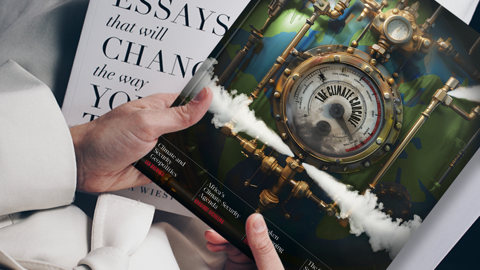
Secure your copy of PS Quarterly: The Climate Crucible
The newest issue of our magazine, PS Quarterly: The Climate Crucible, is here. To gain digital access to all of the magazine’s content, and receive your print copy, subscribe to PS Premium now.
CCR: First, tech companies come in all different shapes and sizes. What we are really talking about here are a few dominant social-media platforms with outsize influence on news agendas and public discourse: Facebook, Google/YouTube, and Twitter.
Second, a company has the right to determine what to allow on a platform, and what kind of community it wants to build or enable. Pinterest can decide that it wants to allow only content related to closet organizing, and Wikipedia can require that all of its content be based on reliable or expert sources. We should avoid language that equates a company’s choice to block particular ideas or rhetoric with state censorship – unless, of course, the government is using private platforms to enforce its own censorial wishes.
Government regulation does have a place; it is certainly not necessarily dangerous. After all, social-media platforms benefit considerably from copyright rules and protections from intermediary liability.
What governments should not do is dictate what content should or shouldn’t be allowed. Instead, policymakers and regulators should focus on protecting users’ rights to privacy and control of their data. That means mitigating the pernicious effects of surveillance and tracking, micro-targeting and manipulation, and election and advertising laws that remain in the pre-digital age. There are many ways to combat disinformation without regulating content.
PS: You note that highlighting safety protocols for freelancers covering COVID-19 might lead newsrooms to embed such protocols in their routines more broadly. What habits, skills, or resources do journalists need to work safely, during the pandemic and beyond?
CCR: CPJ Emergencies – linked to the Committee to Protect Journalists – has been providing detailed safety guidance on COVID-19 for journalists since early February, and regularly updates its advice as new information and concerns come in. One of the most important safety protocols it highlights is also one of the simplest: frequent and thorough hand-washing.
More broadly, journalists should be carrying out risk assessments before heading out on assignment, whether reporting on a health crisis, covering a protest, or working in a conflict zone. In fact, thinking about safety before, during, and after an assignment is an essential habit for every journalist – not just those on the frontlines. And “safety” here includes digital and psychosocial security, in addition to physical safety. Journalists should always be able to discuss safety concerns and protocols with their editors.
PS: You have encouraged activists who created an online spreadsheet of police violence videos to link up with US Press Freedom tracker. You also wrote a book on how Egyptian bloggers used citizen journalism and cyberactivism to chip away at the state’s monopoly on information. How has the advent of the smartphone and similar digital technologies affected the work of organizations like the CPJ, where you are advocacy director?
CCR: By helping us to connect with journalists around the world, smartphones – including the free messaging apps like Signal and WhatsApp they support – have enabled us to cover attacks on the press around the world faster and more comprehensively. They also enable us to send safety advisories directly to journalists’ pockets, and provide access to safety resources while in the field.
Sometimes, smartphones even allow imprisoned journalists to see the campaigns we are carrying out on their behalf. This can provide a powerful psychological boost to people who may otherwise feel alone and hopeless.
PS: Even before Egypt’s 2011 uprising, blogging and social media had become a seminal organizing tool, at least as Western journalists saw it. Iran’s 2009 Green Movement, which mobilized protesters nationwide following the disputed outcome of the presidential election that June, became known in the West as the “Twitter Revolution.” But does reliance on social media risk leading to protest movements that are broad but thin, and thus fairly easy to crush?
CCR: In writing my book, Cyberactivism and Citizen Journalism in Egypt: Digital Dissidence and Political Change, I spent a lot of time with the young people fighting for change in their country. One thing these interactions showed me was that online tools like blogs were essential, because they enabled ordinary people to express themselves freely, to share their vision of a better future, and to spread the word about rights violations by those in power, thereby boosting accountability.
Social media has developed significantly in the decade since the Arab Spring. It has become more mainstream and corporate, and less innovative. Platforms have been co-opted by governments and brands, turning them into battlegrounds for propaganda wars. This limits their utility for social movements in many ways. Nonetheless, they remain useful for organizing and coordinating collective action.
But as I (and others) have emphasized, protest movements – from the environmental and digital-rights movements to the Green Movement and the Arab Spring uprisings, to Black Lives Matter today – exist in many spaces, both online and offline. Calling them “Twitter” or “Facebook” revolutions is reductionist, and disregards the work that so many activists put in over many years to lay the groundwork for them. Were it not for those foundations, leveraging these platforms’ potential as organizing tools would not have had such a meaningful impact.
Radsch recommends
We ask all our Say More contributors to tell our readers about a few books that have impressed them recently. Here are Radsch's picks:
-

If the Oceans Were Ink: An Unlikely Friendship and a Journey to the Heart of the Quran
by Carla Power
A beautifully written exploration of the Quran and Islam, viewed through the eyes of a Western journalist who spent a year exploring them – in all their complexity and simplicity – with a sheikh. Whether you’re a religious scholar or have never read a religious text, the questions, debates, and interpretations that are woven through Power’s account dismantle stereotypes about a monolithic Islam and will impel you to think more deeply about your own beliefs.
-
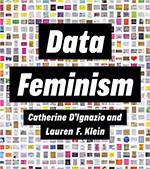
Data Feminism
by Catherine D’Ignazio and Lauren F. Klein
This thought-provoking book delves into the power dynamics shaping data science and data ethics, compelling the reader to reconsider what they think they know and how they know it. With stunning visualizations drawn from multiple disciplines, and footnotes that transcend the canon, this is a must-read for journalists, academics, and anybody else seeking to build a more just and equitable world.
From the PS Archive
From 2020
Radsch highlights a disturbing trend of targeted violence by police against journalists covering protests. Read more.
From 2018
Radsch shows how official measures to contain the spread of misinformation are victimizing legitimate journalists. Read more.
Around the web
Last March at the Camden Conference, Radsch gave a talk on how to ensure press freedom in an age of information warfare. Watch the video.
